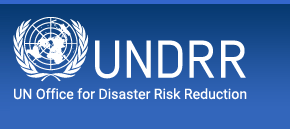- Our Mandate
- Mission and Objectives
- UNDRR in the UN
- Work Programme & Annual Reports
- Results Based System
- Work Partnerships
- Headquarters - Geneva
- SG-UN representatives for DRR
- Regional Office – The Americas and the Caribbean
- Head of the Regional Office – The Americas and the Caribbean
- What is Disaster Risk Reduction?
- What is the International Strategy?
- History of UNDRR
Mexico earthquake triggered safe hospital drive
 The General Hospital in Mexico City was among the health facilities that collapsed during the 1985 earthquake (Photo: USGS)
The General Hospital in Mexico City was among the health facilities that collapsed during the 1985 earthquake (Photo: USGS)
MEXICO CITY, 22 March 2017 – Mexico City's devastating, 8.1-magnitude earthquake of 1985 was a stark illustration of the disaster risks faced by the health sector, but it also triggered what became a global effort to protect hospitals from hazards.
After a tremor of 70 seconds, quake damage had reduced Mexico's hospital capacity by 5,000 beds, sowing chaos in the emergency system at the precise moment that it was most need.
The tragedy claimed 10,000 lives, with hundreds of the dead being people who had been unable to receive care – a disaster within a disaster.
In the earthquake's wake, Mexico decided to carry out a thorough review of its existing and planned hospital buildings to ensure they would be able to function in the event of a repeat disaster, and launched the Safe Hospital Initiative.
"The Safe Hospital Initiative was a direct result of what happened in Mexico in 1985 and in many other parts of Central and South America, where many hospitals have been destroyed or partially affected by disasters," said Mr. Felipe Cruz Vega, its Technical Secretary.
"The Safe Hospital Initiative is about more than just protecting hospital buildings. It also means ensuring the physical and functional integrity of all hospitals and health facilities in any emergency conditions, and making sure they are accessible and functioning, at maximum capacity, immediately after hazards strike," he added.
The initiative aims at protecting hospital infrastructure but also at training staff how to respond and anticipate emergency situations so hospitals can continue functioning when they are most needed.
"We know that it only cost an added investment of 6% to integrate disaster principals in the design of any new hospital, to make it safe against disasters. This is worth the investment for a structure that will probably last at least 50 years," said Mr. Cruz Vega.
International moves on hospital safety have followed ever since.
In 1996, Mexico, the Pan American Health Organization and the World Health Organization signed an agreement on natural hazard protection for hospitals. And in 2005, at the Second World Conference on Disaster Reduction, held in Japan, Mexico was one of the 168 countries that committed to make all its hospitals safe within 10 years.
Mexico also established a National Committee on Safe Hospitals in 2006, involving a range of members of the disaster risk reduction chain. It is made up of representatives from a variety of institutions such as the National Coordination of Civil Protection, the Secretary of Health, the Social Security Mexican Institute, and other public, social and private hospital organizations.
Since the beginning of 2006, 939 hospitals have been risk assessed in Mexico, with only three of them being closed down due to a lack of safety. One was shut because it was built on unstable ground and a fault line, and the two others because of structural faults.
"Today we are upgrading the programme so all hospitals can be adapted to climate change and can integrate new eco-technologies, bio climatic design, and energy-saving efficient systems, so hospitals can be ecological and resilient," said Mr. Cruz Vega.
"For example, we have built some new green hospitals, one of them in Tamaulipas, which consumes 11.25% less electricity, 36.70% less water, and 52.70% less gas. The hospital is built according to seismic building codes. It has large green areas for patients and uses natural light as much as possible. Although the hospital is located in one of the most dangerous parts of Mexico in terms of security, it is a safe building and will be replicated in many other parts of Mexico," he explained.
The issue of safe infrastructure and health sector resilience will be among the many themes on the table in May when Mexico hosts the 2017 Global Platform for Disaster Risk Reduction, in Cancun. Protecting critical infrastructure is a key target of the Sendai Framework for Disaster Risk Reduction, a 15-year global blueprint adopted in 2015.
Related links
Follow the UNDRR news online:
 Now we have twitter account @UNDRR Américas y el Caribe
Now we have twitter account @UNDRR Américas y el Caribe
JOIN US!
Tweets por el @UNDRR Américas y el Caribe
